#North American Herpetology
Text


From: Holbrook, John Edwards. North American Herpetology; or, A Description of the Reptiles Inhabiting the United States. Philadelphia: J. Dobson, 1842.
QL651 .H72 1842
#19thcentury#natureillustration#naturalhistory#turtles#terrapins#herpetology#reptiles#Norther Red-bellied turtle#diamondback terrapin#North American Herpetology#John Edwards Holbrook#libraryofva#rarebooks#specialcollections
35 notes
·
View notes
Text

Eastern Hellbender (Cryptobranchus alleganiensis), family Cryptobranchidae, eastern United States
The largest salamander in the Americas, it gorws to a total maximum length of up to 40 cm (15.7 in).
photograph by Ryan Hagerty/USFWS
#hellbender#cryptobranchidae#cryptobranchus#salamander#amphibian#herpetology#animals#nature#north american
279 notes
·
View notes
Text

Louisiana Pine Snake (Pituophis ruthveni)
Family: Colubrid Snake Family (Colubridae)
IUCN Conservation Status: Endangered
Among North America's rarest snakes, the Louisiana Pine Snake's small population size is the result of its highly specific habitat requirements and the resulting sensitivity to human-driven habitat changes that comes with them; members of this species feed primarily on Baird's Pocket Gophers (a specific species of burrowing rodent,) and almost always live in abandoned Baird's Pocket Gopher burrows (often after having eaten the burrows creator,) and as such in areas where Baird's Pocket Gophers are not present Lousiana Pine Snakes cannot survive. Native to western Lousiana and eastern Texas, members of this species do best in pine forests (particularly those dominated by a specific species of pine, Pinus palustris, forests of which are noted to generally support high levels of biodiversity as a result of the loose canopies they form which allow many smaller species of plants to coexist with them,) and spend most of their lives underground, rarely travelling far from their stolen burrows. They emerge from their burrows mainly during the mid-day to hunt (targeting rabbits, frogs and other rodents when Baird's Pocket Gophers are scarce,) but otherwise remain concealed underground in order to avoid predation and unusually high or low temperatures; during the winter, when the weather becomes colder and prey becomes scarcer, they travel deeper into a Baird's Pocket Gopher burrow and hibernate until the early spring.
--------------------------------------------------------------------------
Image Source: https://www.inaturalist.org/taxa/29041-Pituophis-ruthveni
#Louisiana pine snake#snake#snakes#reptile#reptiles#zoology#biology#herpetology#animal#animals#herpetofauna#squamata#squamate#squamates#wildlife#North American wildlife#North American snakes
182 notes
·
View notes
Text

The Darling Lady
Managed to go out to my morel area and picked a few nice ones. Also encountered this very spicy garter snake lady, who was probably so spicy and snappy because she was very VERY pregnant. Even so, she took about five minutes looking on from a few meters back, and then her false biting at me a moment, and then scootin' off to the shelter of the creekbank a few more yard/meters away… Still, she was BEAUT!

Here is after she became a bit INCENSED at my presence. Most garter snakes in summer and fall, uh, don't behave so snappishly... which is mostly how I determine which of the spring garters I find might be possible momma sneks. You get ready to bite any and every a-hole if you got littles coming!
Lookit 'er flattenin' her head to look all vipery...
#wildlife#herpetology#common terrestrial garter snake#garter snake#pregnant female likely#herp#animal photography#north american#animal behavior#cute#lovely#non-venomous species#my photography
11 notes
·
View notes
Text
Footage of a North American black racer (Coluber constrictor) on my college campus. Taken today, January 19th, 2023 at 1:04 PM EST.
1 note
·
View note
Photo

🐍 North American herpetology: Philadelphia, J. Dobson;1842.
67 notes
·
View notes
Note
Hi I don’t know if this is something you’re interested in but I’ve seen people send you snake themed art and I thought you might get a kick out of something I made for ceramics class. (and I want to talk about my favorite snake)

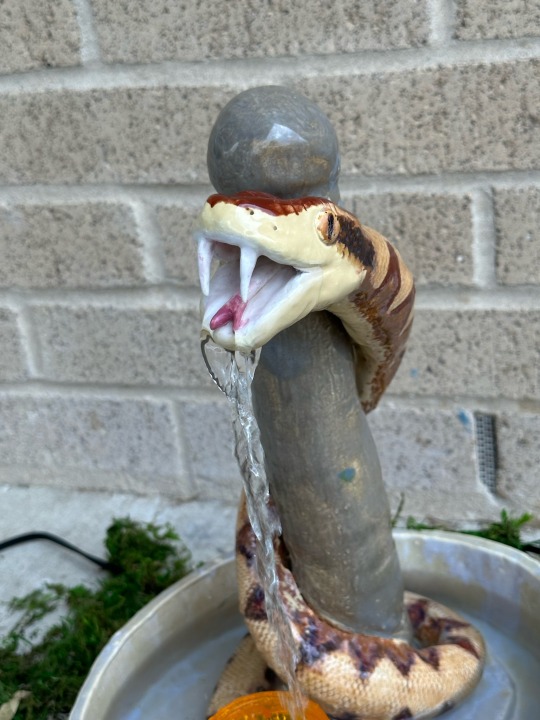
It’s based on Bothrops Jararaca. I found out during research for this project that there are some snakes whose venoms are used in medicine, not just antivenin, and the first medicine to use snake venom, Captopril, comes from Bothrops Jararaca venom. (The water was supposed to come from the fangs but that’s not very doable.) I know it seems to be a really niche subject even in herpetology, but I’m curious if you know of other snake venoms in medicine or if you’ve had experience with that? Honestly outside of research for an art project I don’t know a ton about this and I’d love to learn more.
That's so cool! The Jararaca is an awesome snake, and you did a fantastic job! Such a cool piece.
One of the big reasons (besides antivenin, of course!) that we extract venom at labs is for use in medicines. Snakes in the Bothrops genus have a really good venom for this purpose, and the other really big ones are rattlesnakes. Pygmy rattler venom in particular is super common in medicines for treating heart disease, but just about every North American rattlesnake venom is used in some kind of heart disease medication. Aside from snakes, gila monster venom is also used in medicines used for helping with diabetes symptoms!
64 notes
·
View notes
Text



I have put some experimental scientific illustration edits on my redbubble! Please look at them :>
Weedy Seadragon
Mud Snake
Blue-tongued Skink
The skink and sea dragon are both from Natural History of Victoria while the mud snake is from North American Herpetology v.3 btw! I sourced both of those from the Biodiversity Heritage Library, an insanely deep database for scientific illustrations and vintage natural history works.
5 notes
·
View notes
Text
Fwd: Conference:UMichigan.HerpetologyEvolution.Jun27-30
Begin forwarded message:
> From: [email protected]
> Subject: Conference:UMichigan.HerpetologyEvolution.Jun27-30
> Date: 18 April 2024 at 06:44:18 BST
> To: [email protected]
>
>
>
>
> The Society for the Study of Amphibians and Reptiles (SSAR) will meet
> June 27-30 on the campus of the University of Michigan, Ann Arbor,
> Michigan, USA.The SSAR is meeting jointly with Partners in Amphibian
> and Reptile Conservation (PARC) and the International Society for the
> History and Bibliography of Herpetology (ISHBH) on the Ann Arbor campus
> of the University of Michigan.
>
> The conference includes numerous events of interest to evolutionary
> biologists, including several symposia on functional/evolutionary
> morphology and reptiles & amphibians as models for evolutionary
> developmental biology. Plenary speakers include Neil Shubin, Kartik
> Shanker, & Earyn McGee. Symposium details & speaker lineup are available
> at:
>
> https://ift.tt/gtjbEUG
>
> See registration links on SSAR 2024 main page:
> https://ift.tt/K8tupoS
>
> Key Deadlines at a glance:
>
> **Early registration discount ends: April 22, 2024
>
> ** Standard registration: April 23 - May 15
>
> **Abstract submission deadline (talks & posters): April 22, 2024
>
> Conference schedule at a glance:
> https://ift.tt/gtjbEUG
>
> ** Selected events:
>
> Museums Extravaganza: Flagship dinner and tours at the world-famous
> Museum of Zoology (UMMZ), largest university-affiliated herpetological
> collection in the world. Also featuring the U-M Museum of Paleontology
> and U-M Herbarium.
>
> Toledo Zoo day trip: Less than an hour drive from Ann Arbor, the Toledo
> Zoo is a world-class zoological park that features one of the most
> comprehensive live herp collections in the US. One of the only North
> American zoos with tuatara, plus the largest captive crocodilian in
> the US (the ever-impressive Baru, at 17 feet long and 1500 pounds) and
> a special collection of venomous snakes that includes several gorgeous
> Protobothrops mangshanensis. Behind-the-scenes tours with Toledo Zoo staff
> and researchers. Zoo grounds include the ProMedica Museum of Natural
> History and its Pleistocene bestiary, plus one of the best aquariums
> in the midwest. Zoo features 150 species of reptiles and more than 60
> species of venomous snakes. Space is limited - register soon!
>
> Local field trips: We are excited to offer two half-day trips to natural
> sites just a short drive from campus: the Edwin S. George Reserve,
> and the Matthaei Botanical Gardens. Trips include the potential to
> see some iconic midwestern herps in the wild, including the massasauga,
> Blanding’s turtle, and Butler’s garter snake. The George Reserve is a
> research property administered by U-M Ecology and Evolutionary Biology and
> has been the focus of decades upon decades of pioneering herpetological
> research, including Earl Werner’s work on amphibian community ecology
> and Justin Congdon’s long-term studies of turtle demography. The George
> Reserve features rugged topography with numerous kettle holes, a steep
> and sinuous esker, and numerous other glacial landforms. The reserve is
> continuous with the most expansive forested area in southern Michigan.
>
> Field trip to the U-M’s Matthaei Botanical Gardens, just 10 minutes from
> U-M’s central campus, will visit an extensive outdoor garden complex,
> plus a Conservatory that features fascinating plants from deserts and
> rainforests around the world. Super bonus: the Garden grounds are one
> of the best places to see massasauga rattlesnakes in the wild.
>
> Additional travel and lodging information, including room codes for
> discounted rates in local hotels, is available on the conference website.
>
> Questions: email [email protected]
>
> Dan Rabosky
0 notes
Text

Medusa over here educating everyone in sex ed and herpetological reproduction like a pro and I'm just lost and taking notes because Southern North American public school education.
1 note
·
View note
Text
Words Ending with Ology (Lists)
A very impressive list of different words ending with ology, their origins and their meanings.
Herpetology: Study of Reptiles. | Origin: add | Type: Species Science
Hematology: Study of Blood. | Origin: add | Type: Genetical Science
Scientology: Study of Spiritual Self. Official Description: Religious Group that offers a precise path leading to a complete and certain understanding of one's true spiritual nature and one's relationship to self, family, groups, Mankind, all life forms, the material universe, the spiritual universe and the Supreme Being. | Origin: North American | Type: Religious Spiritual Science
Dendrology: Study of Trees. | Origin: add | Type: Plant Science
Dendrochronology: Study of Trees. Study of Tree Rings to determine the exact year that the Tree was formed. | Origin: add | Type: Plant Science
Entomology: Study of Insects.
Phycology: Study of Algae.
Bryology: Study of Bryophytes. | Origin: add | Type: Plant Science
Mycology: Study of Fungi. | Origin: add | Type: Plant Science
Biology: Study of biological lifeforms. | Origin: add | Type: Study of Biological Lifeforms
Add: Study of Ants.
Add: Study of Music.
Add: Study of Feet.
1 note
·
View note
Text
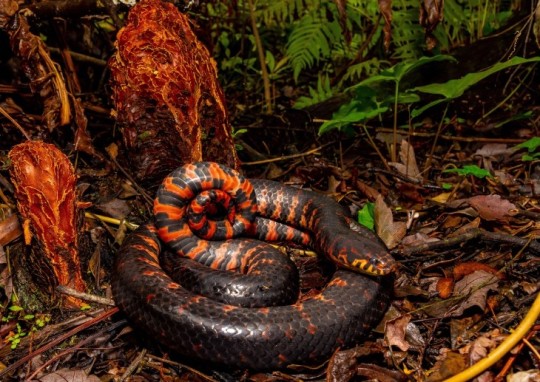
Mud Snake (Farancia abacura)
Family: Colubrid Family (Colubridae)
IUCN Conservation Status: Least Concern
Found mainly in rivers and swamps across much of the southeastern USA, the Mud Snake spends much of its life in the water, feeding primarily on large salamanders such as sirens and amphiumas and typically coming onto land only to bask, lay eggs or travel to other bodies of water during periods of drought. While they lack the venom that many aquatic snakes rely on to subdue prey, members of this species possess a large number of unusually long, curved teeth that aid them in catching slippery animals before swallowing them whole; when threatened they curl their bodies into tight coils and flash their striking red-striped bellies at perceived attackers, although as their teeth are made more for gripping than injuring and they lack venom, this is largely a bluff. Between October and November, when the weather in their native range becomes colder and their prey becomes scarcer, Mud Snakes enter a prolonged state of dormancy in muddy crevices or abandoned burrows, and after emerging again in the spring adults mate, with females laying clutches of over 100 eggs shortly afterwards, leaving them in wet, sheltered places where they will be kept warm and damp until they hatch roughly 60 days later.
--------------------------------------------------------------------------
Image Source: https://www.inaturalist.org/taxa/30106-Farancia-abacura
#mud snake#mudsnake#snake#snakes#zoology#biology#herpetology#animal#animals#wildlife#North American wildlife#herpetofauna#colubrid#reptile#reptiles#squamate#squamates
110 notes
·
View notes
Text
San Diego nonprofit welcomes 41 endangered turtle hatchlings
The San Diego Wildlife Alliance made 41 tiny new turtle additions this summer season, making it the primary accredited North American group to hatch the endangered species.
Through the summer season, a gaggle of Indian narrow-headed softshell turtles (or small-headed softshell turtles) hatched, the conservation group introduced Monday.
The species is listed as endangered on the Worldwide Union for Conservation of Nature Pink Record of Threatened Species, partially because of the worldwide pet commerce, human harvesting for meals, environmental air pollution, and destruction of sand-bar habitats.
Scientists aren’t certain what number of of them are nonetheless residing worldw, however they’re working to determine that out.
The most recent hatchlings are a part of a decades-long effort to revive the species, and the turtles have lived on the zoo for greater than 20 years. Throughout that point, wildlife conservationists have stored a watchful eye on the group in search of indicators of breeding.
In accordance with the group, turtles can take practically 10 years to achieve sexual maturity, and so they sometimes lay eggs in a single day and canopy them with filth, making it onerous to discover a nest.
Endangered species: World’s tiniest sea turtle species found nesting in Louisiana for first time in 75 years
Federally protected: Wolves noticed in federally-protected Cascade Mountains amid slowest progress price since 2016
The workforce discovered two nests with 41 eggs this summer season. A few of them had already hatched contained in the nests, so the workforce “rigorously eliminated” the remaining eggs and put them in a man-made nest incubator. The incubator allowed the workforce to provide the infants one of the best probability at life, together with correct temperatures and humidity for hatchings.
The Indian narrow-headed softshell turtle is discovered on the backside of deep rivers and streams in northern India, Bangladesh, and Nepal, the group stated.
They’re extraordinarily giant and may be so long as 110 centimeters, in line with the Institute of Biodiversity and Environmental Conservation. The most important recorded group of eggs for the species was 193, recorded in September 2008 close to Etawah, India.
Scientists take into account them an “indicator species” as a result of they assist decide the well being of their environments.
“These turtles are higher-level predators inside their native ranges,” stated Kim Grey, curator of herpetology and ichthyology on the San Diego Zoo, within the launch. “If they’re thriving, meaning the river habitats the place they stay are wholesome and may help different species. And that features people, as some native communities depend upon the identical water supply utilized by the turtles.”
Saleen Martin is a reporter on USA TODAY’s NOW workforce. She is from Norfolk, Virginia – the 757 – and loves all issues horror, witches, Christmas, and meals. Observe her on Twitter at @Saleen_Martin or electronic mail her at [email protected].
Originally published at San Jose News HQ
0 notes
Text
Our Outdoors: For Reference | News Dakota
New Post has been published on https://is.gd/0UjL7C
Our Outdoors: For Reference | News Dakota
Hope Hops. A northern leopard frog relaxes in the sunny vegetation alongside a small creek. Identifying those living creatures – from fish to frogs to foxes to ferns – is a vital part of understanding ecology, and oftentimes helps with success in angling and hunting. Simonson Photo.
By Nick Simonson
Atop the tank of the basement toilet, where any good publication of any sort rests in any household, sits a well-worn copy of the National Audubon Society Field Guide to North American Reptiles and Amphibians. As a smaller reference book, it tops of the stack of old Outdoor Life and Dakota Country magazines and sets perfectly on the foundation of the Complete Outdoor Encyclopedia, finishing off the easy access pyramid of print. The crown jewel of my bathroom reading with the emerald leather cover and the slightly torn half dust jacket with a full color photo of a green tree frog reminds me of where my outdoor adventures began and perhaps suggests where those of my progeny are heading.
Long before fishing was at the forefront of my summers, and well ahead of upland hunting filling my falls, I was obsessed with frogs, toads, salamanders, turtles, and lizards from the first spring evening where the air filled with a chorus of croaks to the migration of just-hatched baby snappers through the neighborhood back to the river in the fall. In each of the window wells around my grandmother’s cabin in Detroit Lakes, Minn., in the basement of the farmhouse of my babysitter’s parent’s farm in Nome, N.D., and in the backwater muck of the ponds under the Hi-Line bridge along the Sheyenne River north of our house in Valley City, N.D., I’d search for all the area had to offer. While limited in species to northern leopard frogs, wood frogs, spadefoot toads, snapping turtles, garter snakes, skinks and the handful of other cold-blooded creatures that are adaptable enough to call our sometimes-challenging region home, family trips to the panhandle of Florida opened my world of herpetological experience.
There in the warmth of pre-Easter March or April, I’d chase anoles across the wooden walkways surrounding the pool at my grandmother’s condominium, watching them shift from green to brown as they made the jump from decorative hedge row to deck railing. I’d scoop from the grassy edges of the water hazards of area golf courses the eggs and tadpoles of unknown amphibians in hopes of transporting some home via a pre-Delta Northwest Airlines to see what they’d turn into. In the shade of the stations of the cross walkway behind the church up the road, mixed in with the palmetto bugs were the bright skinned green tree frogs so vibrant that they rivaled the one on cover on the field guide I used to identify them. Luckily one day, after having a good grasp of most of the poisonous species within the compendium and out stalking new specimens, I was able to recall in the moment from memory the outline of a cottonmouth’s head and decided to pass on attempting to capture the juvenile snake of about 16 inches in length which was swimming alongside a school of tadpoles in a water hazard at the par three pitch-and-putt my parents were playing. I won’t go so far as to say the hand-held reference saved my life, but it just might have.
I took my passion for the small book and the creatures within it to state and national Science Olympiad in high school, finishing in the top three at the state competition for the two years the Reptiles & Amphibians event was conducted, and notched a top 15 finish at the national event as a Sophomore. At this point, one can easily imagine my heightened level of disappointment when the event organizers rotated tree and plant identification in for my final two years on the team. While I purchased a similar Audubon Society guide for that event, my passion for tree identification never took root as deeply as my love of reptiles and amphibians.
But maybe, my curiosity for picking those things out in our natural world and learning more about them has been passed along to my oldest son, as this weekend he spent a good stretch of time utilizing his mother’s phone in the house and around the yard. Using an application called PictureThis he snapped photos of various plants that inhabit our yard, and those flowers in the vases inside. With each click of the camera button, the program would match the photo with its digital database and provide the name of the species and its traits on the screen which he would read aloud. From the Canada thistles standing guard alongside the house and the dandelions interspersed in the lawn to the ivy on the back wall and the showy lily in the foyer bouquet, he’d warn of threats the plants posed to our pets, the notable identifiers on each and other elements of interest. His research went on until phone time ended.
In a world where technology and instant information dominate his day and the turning of a page is no longer a requirement for learning, it’s nice to see a sense of exploration of the natural world arise from the growing virtual reality that competes for his attention. Because whether it’s a field guide with paper and glossy pictorials that fueled my love of all that hopped, crawled, and slithered, or the snap-and-scan of an app that provides some added insight to what makes up the greenery around my eight-year-old, whatever gets a person outside and exploring, I’ll refer to as an ally…in our outdoors.
(function(d, s, id) var js, fjs = d.getElementsByTagName(s)[0]; if (d.getElementById(id)) return; js = d.createElement(s); js.id = id; js.src = "//connect.facebook.net/en_US/sdk.js#xfbml=1&version=v2.9"; //FB version change : WD-1625 fjs.parentNode.insertBefore(js, fjs); (document, 'script', 'facebook-jssdk'));
Source link
0 notes
Photo
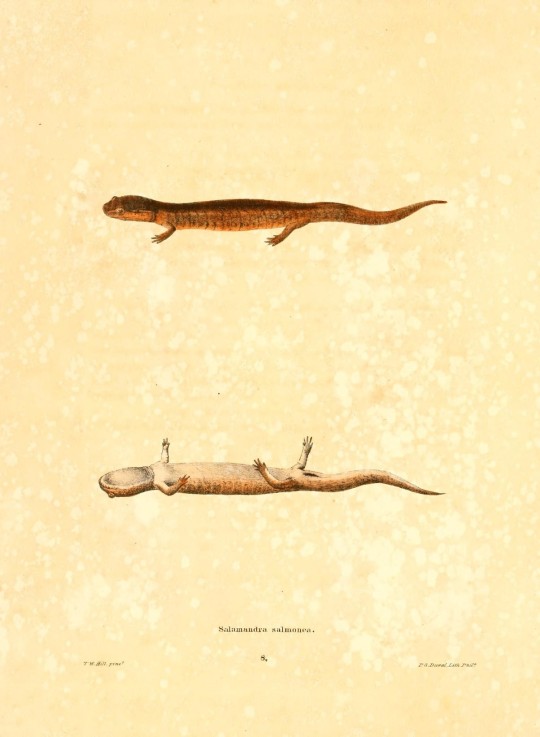
🌎 North American herpetology: Philadelphia, J. Dobson;1842.
53 notes
·
View notes
Text

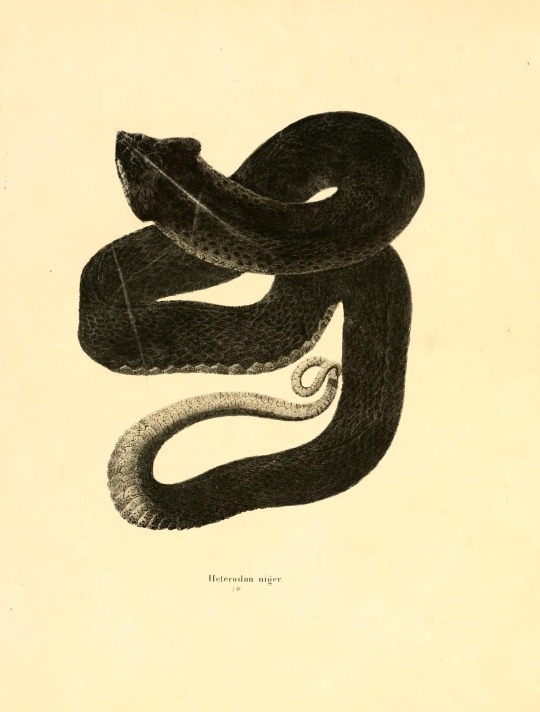



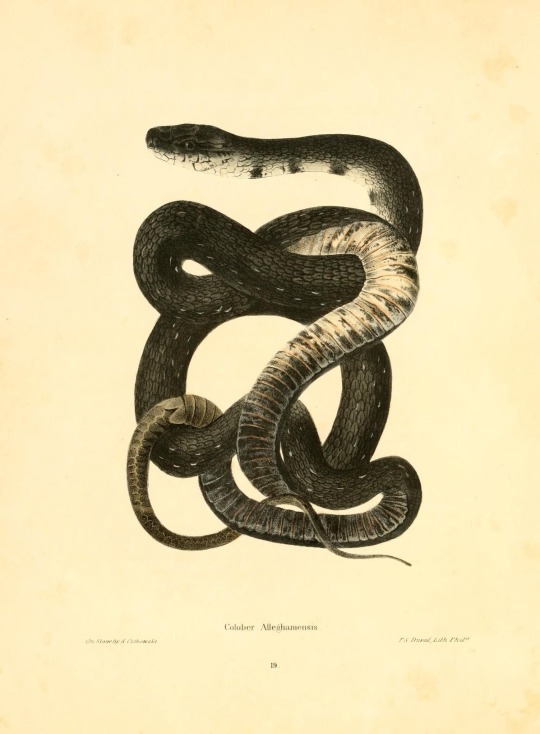
North American Herpetology, vol. iv (1842) - John Edwards Holbrook
#Wonder Rooms#Cabinet of Curiosities#Public Domain#North American Herpetology#19th Century#Scientific Illustration#Herpetology#Zoology#Animalia#Reptilia#Snake#Natural History
316 notes
·
View notes